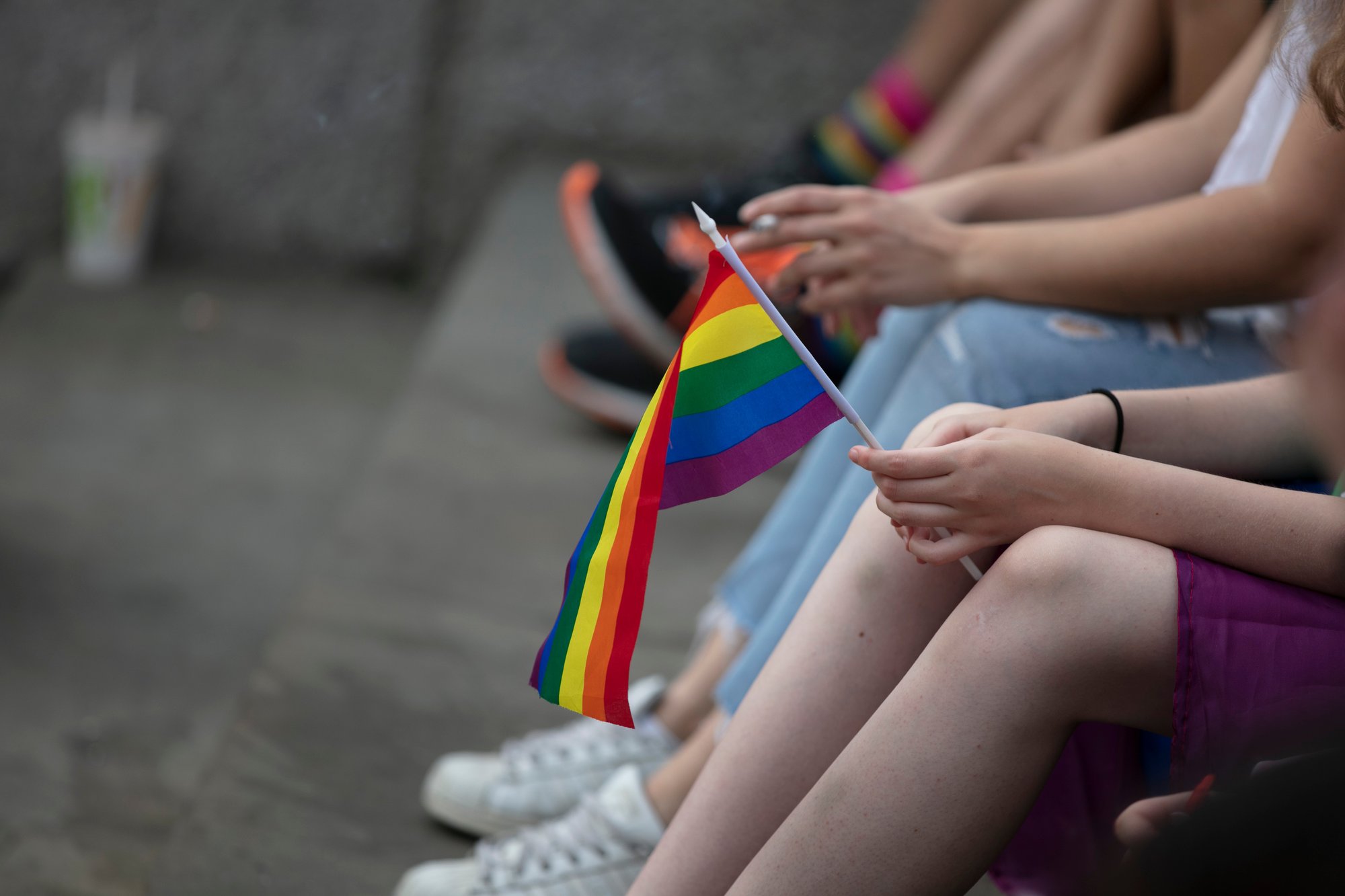Preventing Suicide in LGBTQ Youth
Hope, Support, and Healing for LGBTQ+ Teens Facing Suicidal Thoughts
LGBTQ teens carry a heartbreaking burden when it comes to suicide risk. Compared to their straight peers, they are four times more likely to attempt suicide, with as many as 40% of transgender youth reporting at least one attempt and overall, LGBTQ youth are 5 times more likely to attempt suicide than straight teens. Behind each of these numbers is a young person longing for safety, belonging, and hope.

Table Of Content
- The Crisis Facing LGBTQ Youth
- Unique Risk Factors Facing LGBTQ Youth
- Recognizing Suicide Warning Signs in LGBTQ Youth
- Securing Immediate Crisis Intervention
- Fostering Lasting Protection Through Support
LGBTQ youth often face challenges no young person should have to carry alone. Discrimination, family rejection, social isolation, and the stress of navigating identity can weigh heavily, creating painful vulnerability. For some, this struggle leads to thoughts of suicide.
But hope is real—and help is powerful. When caring adults step in with compassion, understanding, and tailored support, they can make all the difference. Recognizing the signs and responding with life-saving care means more young people get the chance to grow, dream, and thrive as their true selves.
The Crisis Facing LGBTQ Youth
5x Higher Risk
LGBTQ youth are more than five times as likely to attempt suicide compared to their heterosexual peers.
Transgender Teens in Danger
Up to 40% of transgender adolescents report at least one suicide attempt in their lifetime. For transgender male teens who also identify as gay or bisexual, that number rises to over 50%.
The Weight of Uncertainty
Youth who are still questioning their sexual orientation or gender identity are three times more likely to attempt suicide than those who feel certain.
Family Rejection Impact
Coming from a highly rejecting family increases suicide risk by more than eight times compared to youth from accepting homes.
Unsafe at School
31% of LGBTQ students miss at least one full day of school per month because they feel unsafe or unwelcome.
Lack of Support
Only 27% of LGBTQ students report having a school staff member who regularly supports or advocates for them.
These aren’t just numbers—they represent real teens carrying heavy burdens. Awareness of these risks is the first step toward saving lives.
Unique Risk Factors Facing LGBTQ Youth
Unique Risk Factors Facing LGBTQ Youth
In addition to the typical challenges of adolescence, LGBTQ teens carry extra pressures that heighten their risk for depression, anxiety, and suicidal thoughts:
Family Rejection
Teens who feel rejected at home often internalize harmful messages, leading to isolation, hopelessness, and higher risk for depression and suicide.
Bullying & Harassment
Daily verbal, physical, social, or online harassment creates chronic stress and a sense of danger, making it hard for teens to feel safe anywhere.
Identity Struggles
Coming out or exploring identity without support can bring shame, confusion, and fear, silencing teens when they most need affirmation.
Minority Stress
Living under constant prejudice and societal invalidation adds a heavy emotional burden, increasing depression, anxiety, and suicidal thoughts.
Social Isolation
Forced to hide identity or losing friends due to rejection, many LGBTQ youth experience profound loneliness and despair.
Fear of Seeking Help
Many teens hesitate to reach out for mental health support because they fear stigma or attempts to change their identity, rather than being affirmed and understood.
Understanding these unique stressors equips parents, teachers, and caring adults to intervene with life-saving support.
Unchecked, these pressures boil over into catastrophic hopelessness for many LGBTQ adolescents. But compassionate understanding of unique burdens enables caring adults to better uplift and empower vulnerable youth.
Recognizing Suicide Warning Signs in LGBTQ Youth
Recognizing Suicide Warning Signs in LGBTQ Youth
Along with common signals like mood changes, risky behaviors, and discussing death, look for these additional red flags in LGBTQ youth:
-
Withdrawal from LGBTQ friends or communities that previously provided vital support
-
Rejection of previously embraced LGBTQ identity through dress, behaviors, or speaking about identity negatively
-
Defensiveness or lashing out when questioned about abrupt changes in gender expression
-
Severe reaction to a breakup, rejection, or exclusionary treatment by LGBTQ peers
-
Confiding they feel invisible, a burden to others, or that the world would be better off without them
-
Giving away prized belongings and distancing from activities once enjoyed
-
Statements about hopelessness over never being able to live freely as their true self due to family, culture, or society
Take all warning signs seriously, even casual comments can be warning signs for caregivers. Teens drop hints when inner distress becomes unbearable.
Securing Immediate Crisis Intervention
Securing Immediate Crisis Intervention
If an LGBTQ youth confides active suicidal thinking, makes an attempt, or exhibits warning signs requiring immediate intervention:
-
Remain calm and validating. Let them know you care and take the situation seriously.
-
Ask direct questions to gauge imminent risk like if they have a specific plan, means to follow through, or timeline.
-
If risk seems high, call 911 or the National Suicide Prevention Lifeline at 988 immediately to mobilize help. Do not leave the child alone.
-
If the threat is lower but concerns still exist, call the Trevor Project hotline at 1-866-488-7386 to speak with counselors trained specifically in LGBTQ youth suicide prevention. Arrange same-day mental health evaluation.
-
Reassure the child that suicide is not the answer. There are solutions to their struggles and people who want to help. Remind them of reasons for living: future dreams, interests, loved ones.
-
If attempts or high risk present, get caregiver permission to remove dangerous items from their environment like weapons, medications, or sharp objects until professionally assessed.
Never downplay suicidal statements as simply wanting attention. All threats require taking life-saving actions rooted in compassion, not dismissal.
Fostering Lasting Protection Through Support
Fostering Lasting Protection Through Support
While crisis intervention addresses the short-term threat, securing ongoing caregiver support and mental health treatment protects LGBTQ youth long-term.
For parents/families:
-
Lead with unconditional love and acceptance, no matter what. Make home a judgment-free safe haven.
-
Stand up against gender/orientation-based discrimination at school, socially, in healthcare settings, etc. Let your LGTBQ youth see your support visibly.
-
Maintain open communication without overreacting. Prioritize listening without lecturing.
-
Learn about gender/sexual identity. Don’t pressure teens to disclose before they are ready.
-
Participate in family therapy focusing on nurturing identity exploration and social support.
While battling uphill societal prejudice, LGBTQ youth armed with inner strength, community, and a secure support network can persevere over painful challenges. We all play a role ensuring their precious light keeps shining.
There is hope beyond the darkness. No child or teenager deserves to feel so hopeless that suicide seems the only option. Surrounded by unconditional love and support, LGBTQ youth can envision the bright futures meant for them beyond prejudice’s shadow.
By gaining awareness, taking warning signs seriously, intervening with care, securing mental healthcare, and surrounding LGBTQ youth with openness, we write stories where possibilities outpace pain. Their journey may be complex, but they do not have to walk it alone anymore.
